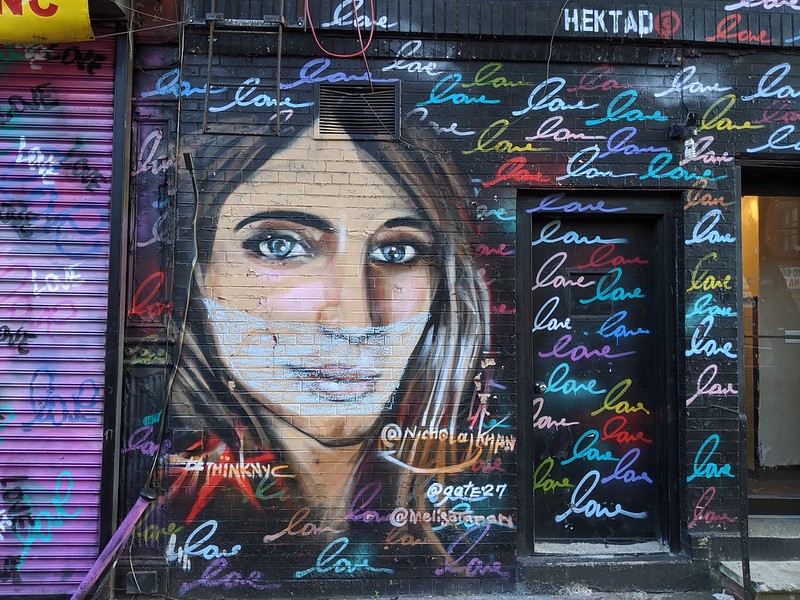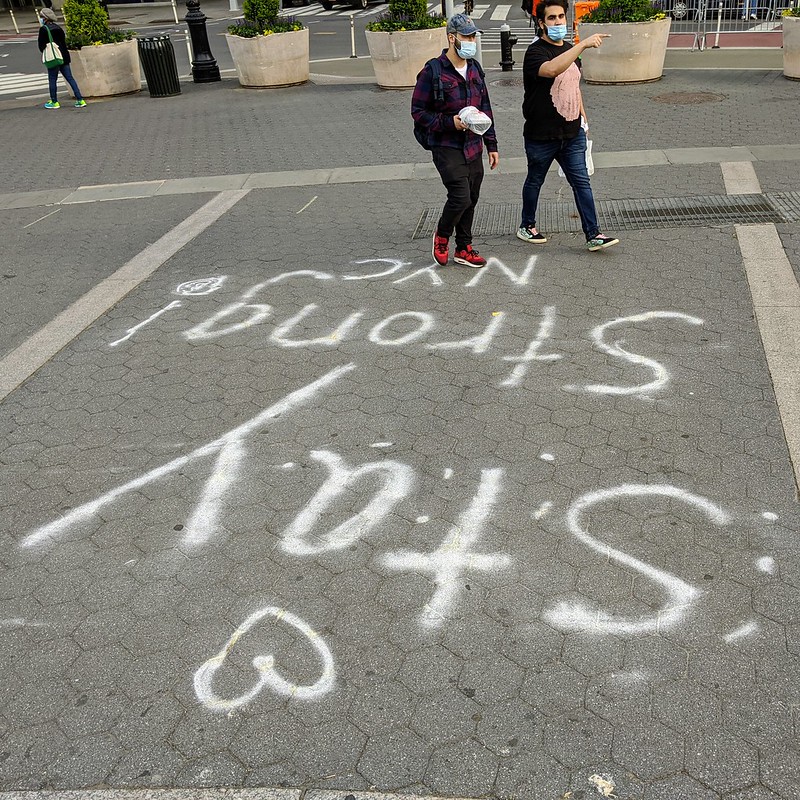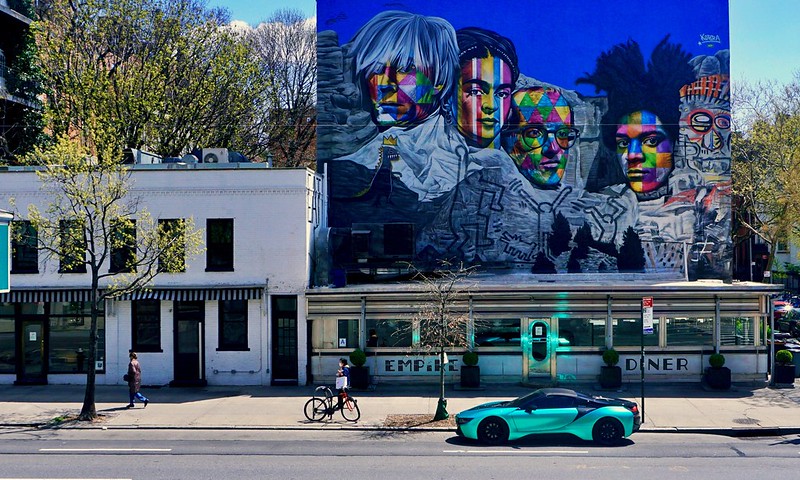After a full year of not having a moment to say hello, I finally met my new neighbor.
She teaches high school chemistry in eastern Long Island and is now working at home when the child in her arms is napping or down for the night. And she is burning the midnight oil, grading one hundred worksheets a day.
“I want to make sure they know the information,” she told me.
Despite an injury, my now-grown children’s first violin teacher is teaching her entire studio of private students online.
“My kids are so far ahead in lessons, I could almost stop teaching right now,” she said, “but I feel they need them now more than ever.”
My son, an orchestra teacher in a private school in Ohio, is preparing his students to make cover videos, and his wife, a violist, is coaching students in chamber music ensembles by way of Zoom break-out rooms.
It is a little more than ironic that we who silenced all devices in our classrooms are now at the mercy of the very latest, most advanced offerings of a technological nature. For someone whose teaching relies on sensing the atmosphere of the room, the online venue felt at first as if someone had pushed me off a dock.
But my NYC community college students are struggling to survive, some of them literally. As a writer myself, and as a teacher of writing for almost forty years, I’m always reminded: When there is nothing left to hold onto, sometimes there are words.

When the college closed, we had finished the section on poetry and would start fiction. I kept in touch with my students by way of Blackboard, and I scheduled Zoom meetings to take place at the same time as my class. As the semester came to an end, I placed my students in break-out rooms to write collaborative plays.
But the real story here happens in that liminal space—in silences when I ask for responses—or when a student apologizes for being unable to do the work or even to show up for class.
Pre-pandemic, this had been an outstanding group with hardly any absences. Their writing had been embodied and strong.
But after it hit, one student emailed that she was seriously depressed. Another student wrote that she had the disease. Another had to care for a family member whose aide had come down with the virus. Another student suffered losses.
During Zoom classes, I began to understand the silences as signs of trauma. The same students offered to do the reading. The same students had done the homework. Creative non-fiction is not among the required genres of the class—but the best work was coming out of the very lives they were living. Two students had written masterful pieces about characters who escaped confinement. It became a challenge to find appropriate examples—published work—neither too dark nor too light.
Eventually, the first student who was ill recovered, and the student who was depressed found motivation that rekindled her writing. Another student volunteered to start a blog to make up for missing out on our celebratory final project—a literary magazine and class party with student performances and homemade food. She lingered after class, as did another student. They’d become friends.
“This is the kind of class where we would have made many friends,” she said.

One of my most diligent students is an older woman who initially introduced herself as someone whose reason for taking this class was to express herself—and her reason for attending school was to be a role model for her daughter. Until the school closed, she had not once missed a class, but that changed when someone at work came down with the virus, and she had to work extra hours. Then, her brother and sister-in-law contracted the virus. She wondered if she, too, might also have it, but she was still sending along the assignments until her father came down with fever. This student had missed three consecutive classes—one because she was sick with the virus, the next because her father died from the virus, and the last because friends had raised money to fund a funeral and burial for her father. She sent me a photograph of the open casket.
Upon her return, she asked to read her story aloud. I shared the screen. She read through tears. Others, too, were wiping tears from their own faces.
I faltered. I almost interrupted her—but then I remembered an email she’d written. She said she had to be strong for her family. This writing documented the disease, how it ravaged her family—how she’d promised her father he wouldn’t die when she took him to the hospital, how she looked into his eyes—and it was here that her tears came. But tears would not stop her. Here was a woman who was a role model for us all.
This is not the first time I’ve been struck by the courage of my students. I also taught in the same school when 9/11 occurred. We lost a building. My husband, an administrator at the college—though he started when I did, as an adjunct—saw the second plane hit. Located within a few blocks of Ground Zero, the school reopened a little over a month afterwards.
This was long before Zoom, by the way. Email itself was not then required to be part of a professor’s repertoire.
Then, just like today, my students wrote their way out of trauma. The poem that recalls itself to me is the one that documented a mother walking across the Brooklyn Bridge to attend her son’s wedding. The wedding was not canceled that Tuesday, the 11th—a lucky day for Orthodox and Hasidic Jews to marry, because of an added God saw that it was good as it is written in Genesis, regarding the third day of creation.
My student’s son had fallen in love with a Hasidic Jewish girl and converted. The writer read her poem aloud, as did other readers, other poems. I remember that moment. I remember where she was sitting, and I remember her reading through her tears—and everyone’s tears—the story of her getting dressed, of having no time to comb her hair, for the long trip, by foot—as there were no trains or buses—to get there on time, the repeating line: because it was [her son’s name]’s wedding day.

Many times, I’ve touted the line from Natalie Goldberg’s iconic book Writing Down the Bones, namely that one must write through tears—that the tears themselves are proof of the alive-ness of the words.
But I’ve worried. The very first time a student began to cry while reading her work was distressing. I thought I’d made a mistake. She had been an extremely shy student whose work was so powerful that I asked if she’d be willing to share. She approached my desk reluctantly and began to read. If it hadn’t been clear to me before that moment, it was obvious as she read that the fiction was inspired by a very real experience of her having been separated from her parents as a young child, during the family’s return from Mexico. Having been born in the U.S., both she and her siblings were American citizens. Her parents were not. She’d gone through unspeakable conditions, and she’d written about it in a vivid, documentary-like manner that exposed the horror of her journey. I had stopped her to see whether she wished to keep reading. For a moment she hesitated, but then she pushed through. The experience changed her. From then on, she began to volunteer.
I’d felt that same initial reticence again, even before my student began to read.
She did not stop. She gathered herself. Her voice broke, but tears did not stop her. She read the story she’d written. She wrote of her pain—the extent of the price her own family is paying in this time of COVID-19. At the end, she asked—why?
Whether or not there is an answer to this question might be irrelevant right now. What seems important is that she’s forming the question.
From the void of a heartbreaking loss, a loss that defies meaning, she is finding the words and crafting meaning. Not only is she finding words, but she is proclaiming them—claiming them as her own—and giving her thoughts to us.
After reading, after hearing their responses, she told the class that it helped her to write this story. Her words would not bring her father back. Yet they can restore the writer. And they can provide a history for a reader. And I, as the teacher, am a witness to this shared generosity.
The writing itself becomes a transformative act—a powerful, restorative, meaningful exchange.





